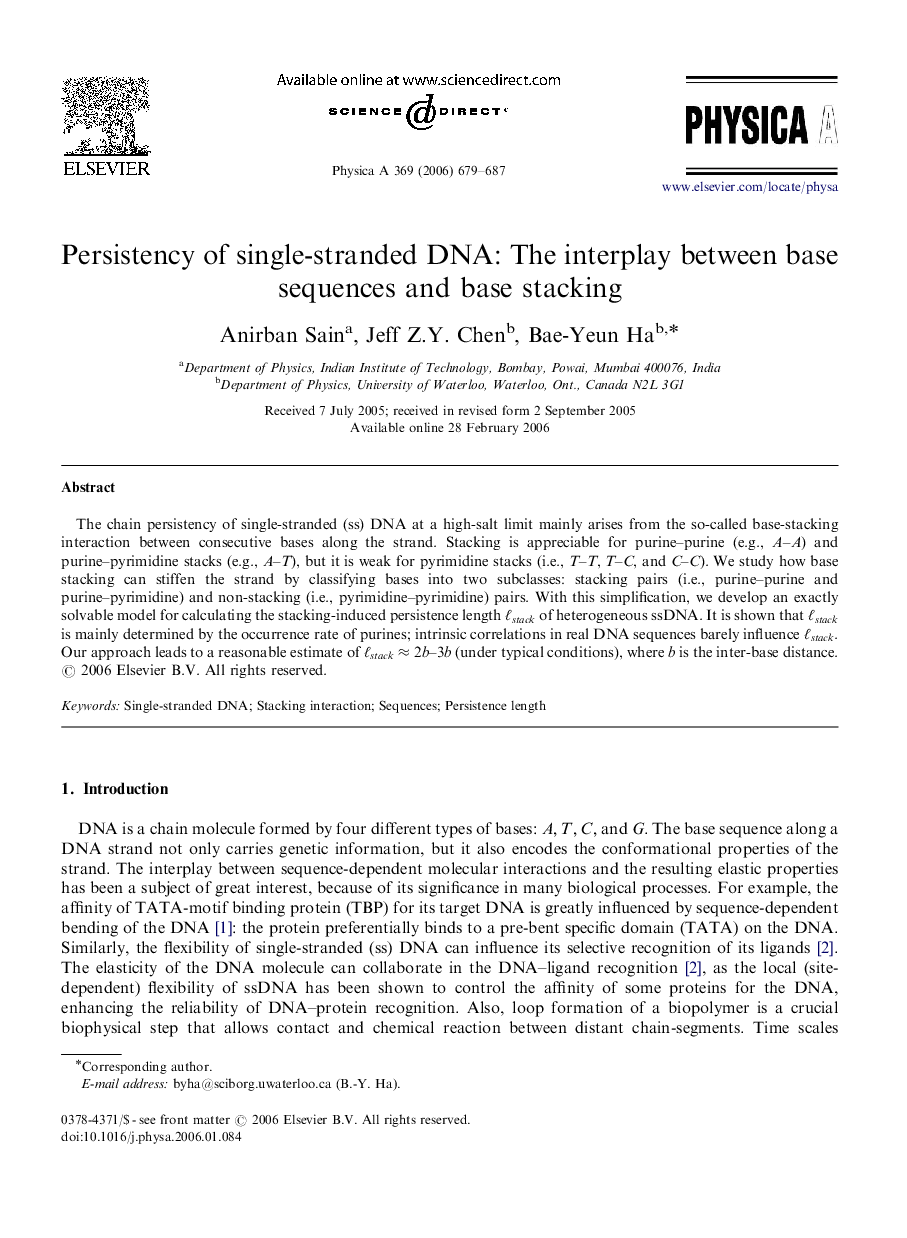| Article ID | Journal | Published Year | Pages | File Type |
|---|---|---|---|---|
| 979749 | Physica A: Statistical Mechanics and its Applications | 2006 | 9 Pages |
Abstract
The chain persistency of single-stranded (ss) DNA at a high-salt limit mainly arises from the so-called base-stacking interaction between consecutive bases along the strand. Stacking is appreciable for purine-purine (e.g., A-A) and purine-pyrimidine stacks (e.g., A-T), but it is weak for pyrimidine stacks (i.e., T-T, T-C, and C-C). We study how base stacking can stiffen the strand by classifying bases into two subclasses: stacking pairs (i.e., purine-purine and purine-pyrimidine) and non-stacking (i.e., pyrimidine-pyrimidine) pairs. With this simplification, we develop an exactly solvable model for calculating the stacking-induced persistence length âstack of heterogeneous ssDNA. It is shown that âstack is mainly determined by the occurrence rate of purines; intrinsic correlations in real DNA sequences barely influence âstack. Our approach leads to a reasonable estimate of âstackâ2b-3b (under typical conditions), where b is the inter-base distance.
Related Topics
Physical Sciences and Engineering
Mathematics
Mathematical Physics
Authors
Anirban Sain, Jeff Z.Y. Chen, Bae-Yeun Ha,
